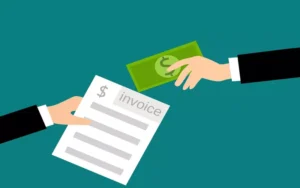How do I get an inherited IRA?
An inherited IRA is an account that is started when someone gets an IRA or an employer-sponsored retirement plan after the owner dies. The person who receives the Individual Retirement Account (IRA) (the beneficiary) can be anyone, such as a partner, a family member, a stranger, or an organization (like an estate or trust). There are different rules for spouses and non-spouses about handling an IRA that was left to them.
This type of IRA is also called a “beneficiary IRA.”Many of the best IRA brokers can help you with these problems, such as handling the inheritance of IRA assets, tax issues, and keeping your retirement account status.
It’s hard to figure out the tax rules for inherited IRAs. The Setting Every Community Up For Retirement Enhancement (SECURE) Act of 2019 made things even more difficult by changing the rules in significant ways, primarily for heirs who are not married.
How to Understand an Inherited IRA
Any IRA can be used to start an inherited IRA by the beneficiary. This includes traditional, Roth, rollover, SEP, and SIMPLE IRAs. Usually, the assets in a person’s dead IRA must be moved to a new IRA in the beneficiary’s name.
Even if a lump-sum payment is planned, this move must be made. You can’t make any more contributions to the IRA that you received.
The Internal Revenue Service has rules for people who receive an IRA.1. For tax reasons, you need to fill out IRS forms 1099-R and 5498 to report inherited IRAs and the money that was taken out of them.
IRAs that are passed down are handled the same way, no matter if they are standard or Roth. How payments are taxed depends on the type of IRA (traditional, funded with pre-tax dollars; Roth, funded with after-tax dollars).
Rules for Spouses About Inherited IRAs
When spouses inherit an IRA, they have more options for handling it. They can move some or all of the money from the IRA into their retirement accounts. This has several benefits, mainly because they can take off the required minimum withdrawals (RMDs) of the money until they turn 73.
Before the Setting Every Community Up For Retirement Enhancement (SECURE) Act was passed in December 2019, RMDs started at age 70. Now, they start at age 72. As part of the SECURE 2.0 Act, this ceiling has since been raised again.2
As long as the distribution is not a required minimum payment, they have 60 days from the time they get it to put it in their IRAs.
Like the people above, spouse heirs can also open a separate IRA account with the money they receive. What they do with this IRA depends on how old the person who owned it before they died was.
If the original owner was already getting RMDs when they died, the spouse beneficiary must either keep getting the payments as planned or come up with a new schedule based on how long they think they will live. If the owner had not yet agreed to an RMD schedule or hit their required beginning date (RBD), which is the age at which they had to start taking RMDs, the beneficiary of the IRA has five years to take the money out, which would then be taxed as income.
How Non-Spouses Can Use Inherited IRAs
People who are not married cannot treat an IRA they receive as their own. In other words, they can’t add more money to the account or move money they’ve inherited into a current IRA account. People who aren’t married can’t leave money in the original IRA. They need to open a new IRA account for the money they received, unless they want to get it all at once in one lump sum.
The SECURE Act has the most significant effect on people who receive IRAs but are not married. It changes how distributions are made. Before, these beneficiaries could handle RMDs in a similar way to that of spousal heirs. For example, they could recalculate them based on their life expectancy, which often significantly reduced the amount withdrawn each year and the tax due (for traditional IRAs).
When someone inherits a Roth IRA, they have to withdraw, but the money is still tax-free, and there is no early withdrawal penalty, even if the beneficiary is younger than 59½.
Not anymore. The SECURE Act says that non-spouse recipients of accounts left to them after December 31, 2019, must usually cash them out within ten years of the original owner’s death. Some heirs don’t have to pay.
- those whose ages are within ten years of the dead
- disabled, or chronically sick people
Or minor children must be straight descendants (no grandchildren), and the 10-year rule also applies to them when they turn 18.
The drops don’t have to happen at a particular time; they can happen all at once or yearly. The old rules and schedules for distributions still apply to these types of beneficiaries and people who already have IRAs that they got.
What can you do?
Depending on how close they were to the person who died, IRA beneficiaries can collect their inheritance in several ways. All heirs can get the money or refuse to accept it as an inheritance. Natural beneficiaries may also choose to leave the money in the plan, depending on the type of account they received. Spouses have the most choices, followed by natural heirs who are not spouses. Beneficiaries who are not native have the fewest choices.
Beneficiary of the spouse
If you are a spouse who inherits IRA funds, you have the most choices for protecting and getting your money. You can choose to:
You can use a lump-sum spread. Life insurance death benefits are not taxed, but IRA payouts are. The beneficiary of an IRA is taxed on the money they get.
Put the money you got as an inheritance into a personal IRA of the same type. Take the money from the traditional IRA of a deceased partner as an example. You can move that money to your own traditional IRA.
RMD: The IRS Uniform Lifetime Table life expectancy factors determine your required minimum payouts based on age. The factors in the Uniform Lifetime Table are based on two lives and are about twice as high as those in the IRS Single Life Expectancy Table. This means that payouts are spread out over a longer period of time.
Put the money you received into an inherited IRA.
The required minimum distribution (RMD) differs from a traditional IRA in that it is based on the age of the person who died and is determined using the IRS Single Life Expectancy Table life expectancy factors.
Don’t take the money. The remaining significant beneficiaries get the money because the first beneficiaries did not claim it. Significant beneficiaries can get the money if the disclaiming beneficiary is not named. These are called contingent beneficiaries. If there is no named recipient, the money goes to the estate of the person who died or as specified in the contract.
Beneficiary Who Is Not Married
Natural and non-natural people can be non-spousal heirs. For organizations that are not people, like nonprofits, businesses, trusts, and estates, the money can be given as a lump sum or put into an inherited IRA in the beneficiary’s name.
- For natural heirs who are not married, funds can be
- when it is given as a lump sum, which is taxed to the recipient
- Give the money and all its rights to the remaining recipients or the deceased person’s estate.
The money should be put into their own family IRA.
Required Minimum Distribution (RMD): If the original owner died before December 31, 2019, the beneficiary’s age will determine the required minimum distribution (RMD).
RMD: The money will be paid out within ten years of the original owner’s death date if they died on or after January 1, 2020. For some beneficiaries, like minor children, someone who is disabled or seriously ill, or someone who is no more than ten years younger than the person who died, the rules from before January 1, 2020, still apply.
Do people who inherit IRAs have to pay taxes on them?
If someone inherits an IRA, they might have to pay taxes, depending on their position. Most of the time, you don’t have to pay taxes on a Roth IRA that you receive. If you receive a traditional IRA, on the other hand, you may have to pay taxes on any money you take out. On the other hand, estates that have to pay the estate tax may also be able to reduce the taxes they paid on their IRA from their income taxes.
What Happens If Your Parent Gives You an IRA?
If a child is not yet old enough, the money in their IRA can be managed by a caretaker until they reach the state-set age of majority. At that point, the child would have full access to the money. They could take money out of the IRA, but based on the type of account, they might have to pay taxes on that money.
Inheriting an IRA: How do I keep from having to pay taxes on it?
Some of the best ways to keep a family IRA from being taxed are to do things with it before the original owner dies. Many times, it’s best for the person to change their standard IRA to a Roth IRA so that they may pay less in taxes in the future, especially after they die. People who receive IRAs can also choose not to take non-qualifying distributions, which would be taxed otherwise.
Conclusion
- This type of account is started when someone inherits an IRA or employer-sponsored retirement plan after the original owner dies. It is also called a beneficiary IRA.
- You can’t make any more contributions to the IRA that you received.
- Rules are different for people who are married and people who are not married who inherit IRAs.
- The SECURE Act said that people who are not married must empty inheritance IRAs within ten years.
- Starting at age 73, people with traditional IRAs must take the required minimum payouts. Withdrawal rules for Roth IRAs are different, though.


































